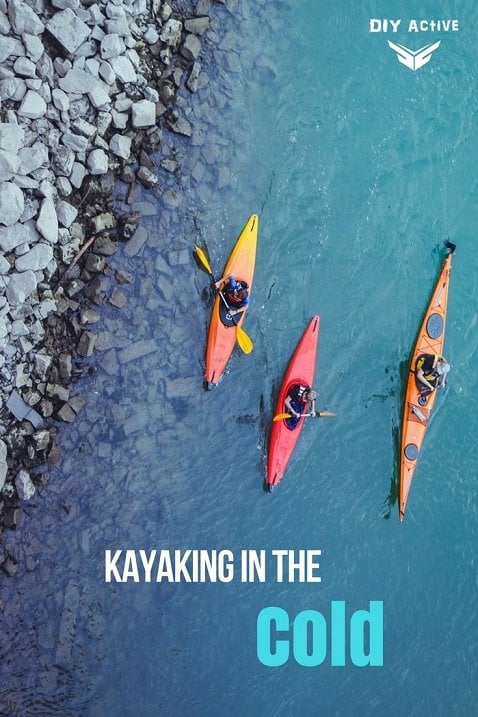This post may contain affiliate content from which we earn a small commission at no additional cost to you. Read our full disclosure.
Why Would You Kayak in the Cold?
Kayaking is typically something that people picture as a warm-weather activity where the sun is shining and the lakes are blue. However, dedicated kayakers paddle year-round. Aside from the physical benefits of maintaining your kayaking routine, you are also more likely to get the lake all to yourself! Here’s why you might want to kayak in the cold:
So What Is the Best Way to Kayak in the Cold?
Kayaking in the winter has several benefits that give you the edge both mentally and physically that help you get the most out of yourself. Before you try out Mother Nature in the winter, you should first accustom yourself to paddling in warmer weather. Learn how to get in and out of your kayak in the water when it’s warm so you’re a pro by the time it’s cold.
Summer preparation also helps you come to grips with the handling of your kayak and allows you to practice rolling and other safety drills that you simply cannot do during winter.
The Advantages of Kayaking in the Cold:
- No mosquitoes or horse flies to eat you alive
- Fewer people, more nature
- You get to see your favorite paddling destinations from a different perspective
- There is no sun constantly beating down on you
- It is a great way to stay active year-round
- Your body temperature regulates better in the cold
- You burn more calories
The Disadvantages of Kayaking in the Cold:
- You have to layer up
- You have to be aware of the dangers and symptoms of hypothermia
- There are fewer people on the water, so you should know some rescue techniques
1. Come Prepared
As when doing any sort of activity during winter, you need to come prepared. With kayaking, this is amplified even further. Below are a few steps that will help you come prepared for your maiden winter journey.
For the Kayak: 
- Sprayskirt
- Bilge pump
- First aid kit
- Paddle leash
- Whistle
- Drybag with dry clothes
- Food and water
When paddling in the winter months, it is best to equip your kayak for the worst-case scenario. Your risk is heightened in the winter months because of hypothermia, so it is important to tell people when you are leaving for your trip and when you are planning on coming back if you choose to paddle alone.
The last item on the checklist is one that many people forget but is important. Food and water give you energy and help your body function at its best. Some food ideas you can bring on your trip include wraps, granola bars, trail mix, or other easy-to-grab food. Make sure that you bring food that is packed with vitamins and other essential nutrients. You can get some ideas here!
It’s also important to dress appropriately. Here are some tips:
To Wear:
- Neoprene wetsuit
- PFD (Personal Floatation Device such as a life jacket)
- Drysuit to wear over your wetsuit
- Hoodie or paddling jacket to keep warm
- Wetsuit booties
- Gloves that are comfortable for paddling
2. Know Your Terrain
Unless you are an experienced paddler in the winter months, stick to areas that you paddled in the summer months. No one is born an experienced paddler, so keep this in mind before tackling more treacherous conditions. Sheltered bays and rivers are excellent locations. If you are going out onto the ocean, keep an eye out for the tide tables before paddling.
3. Consider Your Skill and Fitness Levels
As with knowing your terrain, you should recognize your skill and fitness levels before attempting to paddle in the winter. Make sure that you familiarise yourself with all the associated rescue techniques such as wet exits and actually practice them in the summer months.
When paddling in the cold, it is always important to listen to what your body is telling you and what the conditions you’re paddling in are telling you. Your core temperature will rapidly rise and fall based on the intensity of your paddling.
If you are paddling non-stop and you start feeling too hot, you should take a break and cool down. If you start shivering, it means that you are under-dressed or you are doing too much sightseeing and not enough paddling. Remember, kayaking is effective at burning calories when you are actually exerting effort!
4. Bring a Buddy
For safety reasons, it makes sense to bring a paddling friend with you until you are fully confident in the terrain you are paddling on and have gained the experience. Having someone there to save you could be the difference between life and death. Besides, it is way more fun to have a friend with you when you spot something remarkable than simply telling them the next day.
Wrap-Up
This is an obvious one, but we wanted to end this article on a positive note: Have fun! It is great seeing your favorite lake, river, or bay from a different perspective. There are not as many boats, people, or overall traffic on the water which allows you to immerse yourself in the sights and sounds of nature.
This is particularly meditative and can help take your mind away from that thing that upset you earlier. We are big believers that nature always brings out the best in us, and with the benefits of paddling, you can get in shape for the upcoming summer weather!
- Kayaking in Cold Weather - January 31, 2018
Disclosure: In the spirit of full disclosure, DIYactive.com may be compensated in exchange for featured placement of certain reviews or links on this website. View our full disclosure.